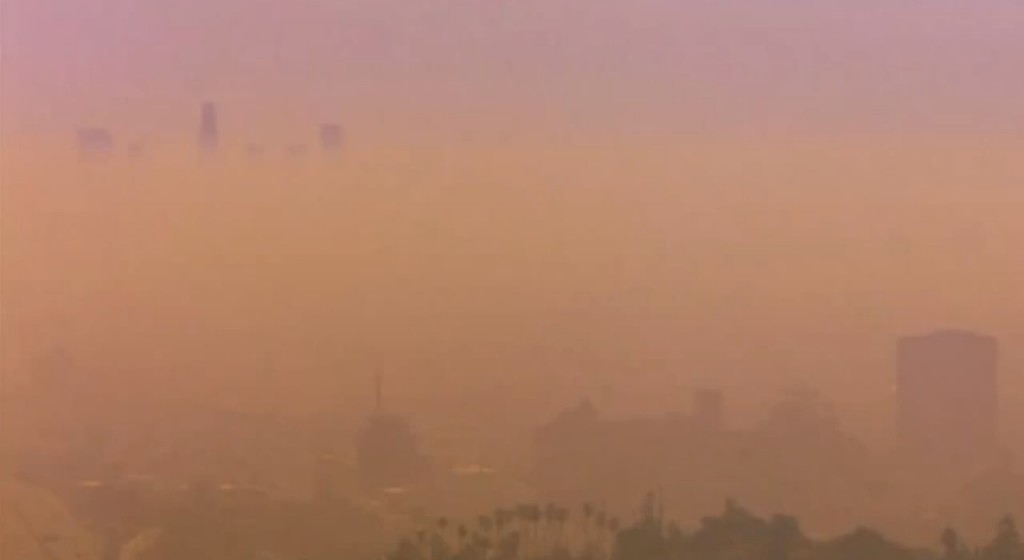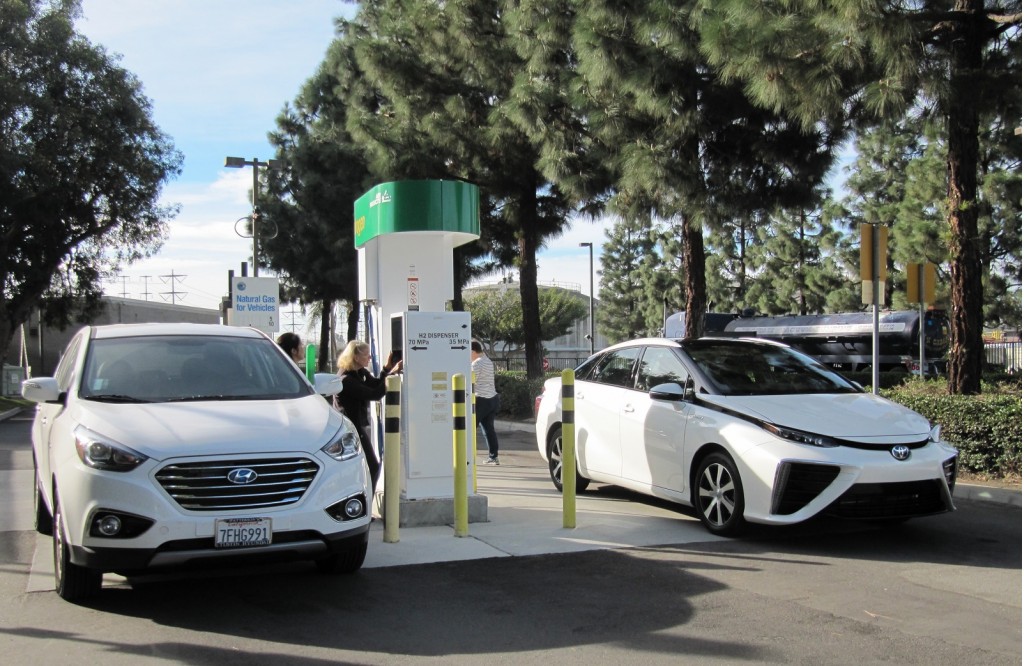California is very different from the rest of the United States.
All by itself, it's the sixth largest economy in the world. One eighth of all Americans live there.
It's home to Silicon Valley, as well as much of the global entertainment industry, and it produces a large proportion of the nation's fruit and vegetables.
DON'T MISS: A Brief History Of Smog, Which Led To Electric Cars
Its Los Angeles Basin is also doomed by its geography and geology to suffer perennially bad air.
Even the Spanish Conquistadors complained about the haze caused when smoke from the campfires of indigenous peoples was trapped against the mountains to the east by climatic inversions.
That problem got immensely worse with the arrival of motor vehicles, and California became a pioneer in researching the sources of smog—and then legislating ways to reduce emissions.

1970s Los Angeles smog depicted in the Honda short film
Which is why California, today, has more than 20 zero-emission and plug-in electric vehicles on sale—the most of any state in the union. That's largely due to the efforts and regulations passed by the state's powerful Air Resources Board.
The array of choice was demonstrated two days ago by a post in a Facebook group for San Francisco Bay-area Nissan Leaf owners from electric-car advocate Kelly Olsen.
He wrote that he had just initiated the paperwork to get a second one-year lease extension on his 2013 Nissan Leaf, which will carry him over until details on the second-generation 2018 Nissan Leaf and the car itself become available.
READ THIS: Nissan Leaf leases can extend until all-new 2018 electric car late this year
He's "still heavily leaning towards waiting for the 2018 Leaf" (thought to resemble the Nissan Sway concept car), Olsen wrote. "If [it offers] a 60-kilowatt-hour battery, then I'm in line."
But, he warns Nissan, "Anything less and I'm going for a Chevy Bolt EV."
Then comes the kicker: yesterday, Olsen was to get a Bolt EV delivered to his door for a test drive. It's "a new program they have in certain California areas."

2017 Chevrolet Bolt EV, road test, California coastline, Sep 2016
Then he spent a few paragraphs on his impressions of the 2017 Toyota Mirai hydrogen fuel-cell sedan, which he'd test-driven this week as well.
Olsen found the Mirai "impressive but also a bit weird." As we too noticed on our test drive, "it makes odd gurgling noises upon startup and acceleration, and some fairly loud noises when you have it in regen mode, which is very weak."
(The Mirai's battery pack is no larger than that of a conventional hybrid car, at 1.6 kwh, so it's only there to buffer acceleration demands and recapture a bit of wasted energy—it's not for substantial propulsion effort.)
CHECK OUT: 2016 Toyota Mirai: First Drive Of Hydrogen Fuel-Cell Sedan
Olsen added that the Mirai's acceleration wasn't like that of an electric car: "No 'Holy Crap!' feeling."
He felt the appointments were nice, the car was very comfortable, and the 312-mile EPA range rating, the promise of 5-minute fillups, and three years of free hydrogen fueling at a filling station just six blocks from his house were all impressive.
But, he concluded, the Mirai is "still a fossil-fuel vehicle at this point because they use natural gas to create the hydrogen." (One-third of hydrogen fuel in California is required to be defined as "renewable," with some exceptions.)

2015 Hyundai Tucson Fuel Cell, 2016 Toyota Mirai at hydrogen fueling station, Fountain Valley, CA
Olsen's array of choices, from a Bolt EV delivered to his door for testing to being able to consider a hydrogen-powered vehicle, underscores just how much work California has put into getting more zero-emission vehicles onto its roads.
Today, only Californians can even consider the option of fuel-cell vehicles, now that a few dozen hydrogen stations are up and running. That won't happen in the rest of the country for many years.
In other words, outlanders: read it and weep. (Alternatively, contact your state legislators.)
_______________________________________













